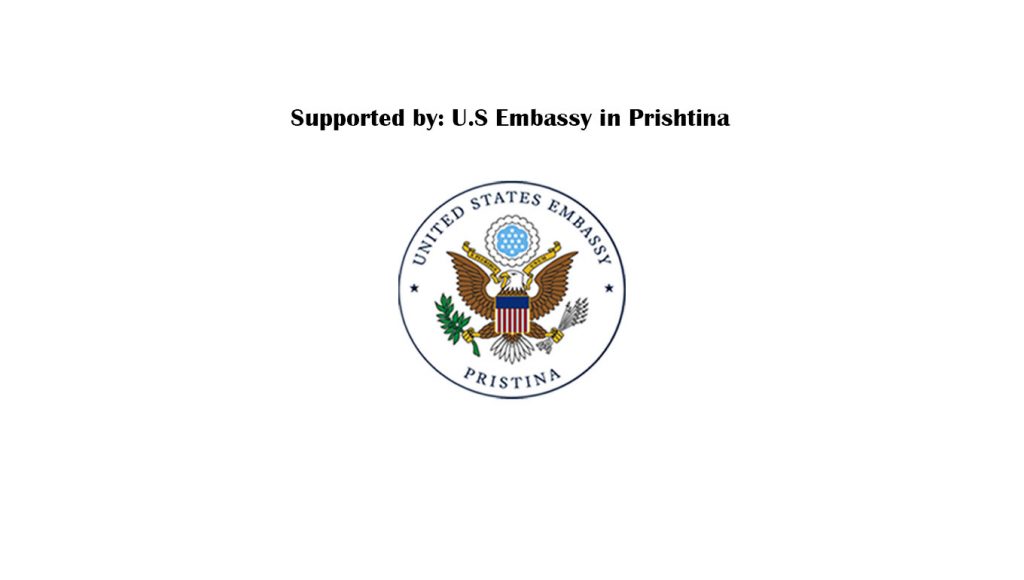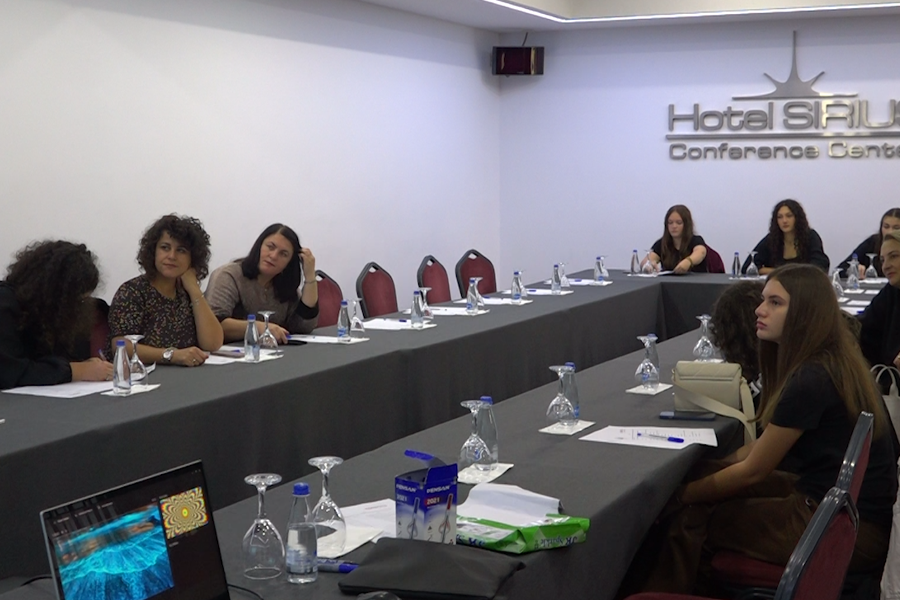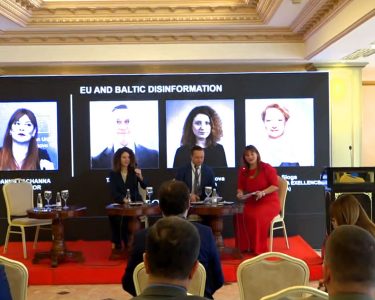The series of trainings within the project “Media education against disinformation for non-majority communities in Kosovo”, supported by the Embassy of the United States in Prishtina, has resumed.
High school students and civil society activists of the Bosnian and Turkish communities had the opportunity to learn important information on distinguishing fake content in media and social networks.
The opening of the Iber Bridge and the information that it had snowed in Gjilan on September 10 were among the fake news that the student from the “Sami Frashëri” high school in Prishtina had read.
While showing that the trend of publishing fake news is growing more and more, Dina Krypa said that media education training has helped them become more aware of this phenomenon.
“This training is very important, because it has enabled us to be more aware of the media. We are living in the time of technology and we are always using the phone, the media, the TV and others, but we are not aware of what happens in the media, is the information fake or true, or the news that impresses us is true or fake. I think that there are much fake news, because they strive for clicks and people then wonder if it is true or not and they don’t know. Recently, I came across two news that impressed me a lot, that it snowed in Gjilan on September 10 but that photo was taken earlier. And another news that the Iber Bridge has been opened, but we have had no facts and no one said that the Iber Bridge has been opened”, said Krypa.
Likewise, the Bosnian student from the “Naim Frasheri” elementary school in Prishtina, Irsa Markovic, emphasized that the most important part of this training was to learn the differences between disinformation, misinformation and malinformation.
The ever-increasing use of artificial intelligence was among other issues that were mentioned in this training, which Markovic herself spoke about.
“The most interesting part about this entire training in itself was learning the differences between all these misinformations; there was a disinformation, malinformation, and misinformation, before I used to just group them into one, misinformation in itself. But learning the difference between them is really useful for me, as an individual who wants to learn to separate between fact and false, and learning all these new things certainly is fun for me. There was this movie I watched where it was made entirely off of artificial intelligence, the voices, the animation, the entire writing itself was made off of AI and it felt so soless. I could not for the life of me enjoy it in the slightest and it just felt like another thing that companies would make just for an extra dollar in their pockets”, said Markovic.
The head of the non-governmental organization aimed at cooperation and understanding between the non-majority communities in Kosovo “Hanuma”, Shukrie Gori-Markovic considers it very important to hold this training. According to her, for the first time, the students were given the opportunity to cooperate with each other and to have their opinions valued.
“It was a pleasure to be in the social media education training today, for us as an organization, but also for our children from non-majority communities it is something very important, because they have been given the opportunity for the first time to interact and see that their opinion is just as important as the opinions of other people, who are not non-majority communities, but live in Kosovo”, said Gori-Markovic.
Likewise, the co-founder of the NGO “Hanuma”, Melida Baqevac, said that in today’s training she learned new things about fake news that she had no knowledge of before.
“Today’s training was very important, especially to educate ourselves in the media aspect, because just as in life, so should in school and family, the youth should learn more about disinformation and information as they use social networks on digital devices and today I learned some new news and some tricks that I didn’t know existed in the media. Today I learned something new and I really liked today’s training”, said Baqevac.
Meanwhile, the project manager of “Media education against disinformation for non-majority communities in Kosovo” emphasized that Bosnian and Turkish students and activists had the opportunity to receive essential information regarding the identification of fake news and protection from it.
“The importance of the training is extremely great. The Bosnian and Turkish children and activists, for whom this session was dedicated, received extremely essential information and innovations for them, on how to identify fake news or how to protect themselves from disinformation. This is something very important that has to do with media education that serves these young people a lot, which they also said themselves”, said Miftari.
The project “Media education against disinformation for non-majority communities in Kosovo”, supported by the United States Embassy in Prishtina, started about three years ago. This project has included training for students from non-majority communities in most cities of Kosovo. Its purpose is for the young people of these communities to learn to distinguish fake content from real ones. Also, through the exercises and topics covered during the training, it is intended to develop the critical thinking of the participants. /Z. Zeneli/









